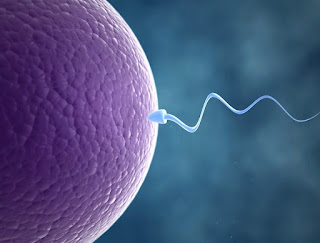Nano technology:
Nanotechnology was characterized by the Public Nanotechnology Drive as the control of issue with something like one aspect estimated from 1 to 100 nanometers (nm). At this scale, regularly known as the nanoscale, surface region and quantum mechanical impacts become significant in portraying properties of issue. The meaning of nanotechnology is comprehensive of a wide range of exploration and innovations that arrangement with these exceptional properties. Seeing the plural structure "nanotechnologies" as well as "nanoscale innovations" to allude to the expansive scope of examination and applications whose normal quality is size.[1] A previous portrayal of nanotechnology alluded to the specific mechanical objective of exactly controlling iotas and particles for manufacture of macroscale items, additionally now alluded to as sub-atomic nanotechnology.[2] is in this way normal,""
Nanotechnology as characterized by size is normally wide, including areas of science as different as surface science, natural science, sub-atomic science, semiconductor physical science, energy storage,[3][4] engineering,[5] microfabrication,[6] and atomic engineering.[7] The related exploration and applications are similarly assorted, going from augmentations of traditional gadget physical science to totally new methodologies in light of sub-atomic self-assembly,[8] from growing new materials with aspects on the nanoscale to coordinate control of issue on the nuclear scale.
Researchers at present discussion the future ramifications of nanotechnology. Nanotechnology might have the option to make numerous new materials and gadgets with a tremendous scope of utilizations, for example, in nanomedicine, nanoelectronics, biomaterials energy creation, and shopper items. Then again, nanotechnology raises a large number of similar issues as any new innovation, including worries about the harmfulness and ecological effect of nanomaterials,[9] and their likely impacts on worldwide financial matters, as well as hypothesis about different Judgment day situations. These worries have prompted a discussion among backing gatherings and legislatures on whether extraordinary guideline of nanotechnology is justified.
Starting points
Principal article: History of nanotechnology
The ideas that cultivated nanotechnology were first examined in 1959 by physicist Richard Feynman in his discussion There's A lot of Room at the Base, in which he portrayed the chance of union through direct control of iotas.
Examination of nanomaterials sizes
The expression "nano-innovation" was first utilized by Norio Taniguchi in 1974, however it was not commonly known. Propelled by Feynman's ideas, K. Eric Drexler utilized the expression "nanotechnology" in his 1986 book Motors of Creation: The Approaching Period of Nanotechnology, which proposed the possibility of a nanoscale "constructing agent" which would have the option to fabricate a duplicate of itself and of different things of erratic intricacy with nuclear control. Additionally in 1986, Drexler helped to establish The Premonition Foundation (with which he is not generally associated) to assist with expanding public mindfulness and comprehension of nanotechnology ideas and suggestions.
The rise of nanotechnology as a field during the 1980s happened through intermingling of Drexler's hypothetical and public work, which created and promoted a reasonable structure for nanotechnology, and high-perceivability exploratory advances that caused extra wide-scale to notice the possibilities of nuclear control of issue. During the 1980s, two significant leap forwards started the development of nanotechnology in the cutting edge period. In the first place, the creation of the filtering burrowing magnifying lens in 1981 which empowered perception of individual iotas and bonds, and was effectively used to control individual molecules in 1989. The magnifying lens' engineers Gerd Binnig and Heinrich Rohrer at IBM Zurich Exploration Research center got a Nobel Prize in Material science in 1986.[10][11] Binnig, Quate and Gerber likewise developed the similar to nuclear power magnifying lens that year.
Buckminsterfullerene C60, otherwise called the buckyball, is a delegate individual from the carbon structures known as fullerenes. Individuals from the fullerene family are a significant subject of exploration falling under the nanotechnology umbrella.
Second, fullerenes were found in 1985 by Harry Kroto, Richard Smalley, and Robert Twist, who together won the 1996 Nobel Prize in Chemistry.[12][13] C60 was not at first depicted as nanotechnology; the term was utilized in regards to ensuing work with related carbon nanotubes (once in a while called graphene tubes or Bucky cylinders) which recommended expected applications for nanoscale gadgets and gadgets. The revelation of carbon nanotubes is to a great extent credited to Sumio Iijima of NEC in 1991,[14] for which Iijima won the debut 2008 Kavli Prize in Nanoscience.
In the mid 2000s, the field collected expanded logical, political, and business consideration that prompted both debate and progress. Discussions arose in regards to the definitions and likely ramifications of nanotechnologies, exemplified by the Imperial Society's report on nanotechnology.[15] Difficulties were raised in regards to the plausibility of uses imagined by backers of sub-atomic nanotechnology, which finished in a public discussion among Drexler and Smalley in 2001 and 2003.[16]
In the mean time, commercialization of items in view of progressions in nanoscale advances started arising. These items are restricted to mass utilizations of nanomaterials and don't include nuclear control of issue. A few models incorporate the Silver Nano stage for utilizing silver nanoparticles as an antibacterial specialist, nanoparticle-based straightforward sunscreens, carbon fiber reinforcing utilizing silica nanoparticles, and carbon nanotubes for stain-safe textiles.[17][18]
State run administrations moved to advance and subsidize examination into nanotechnology, for example, in the U.S. with the Public Nanotechnology Drive, which formalized a size-based meaning of nanotechnology and laid out financing for research on the nanoscale, and in Europe through the European Structure Projects for Exploration and Mechanical Turn of events.
By the mid-2000s new and serious logical consideration started to thrive. Projects arose to create nanotechnology roadmaps[19][20] which focus on molecularly exact control of issue and talk about existing and projected capacities, objectives, and applications.
Crucial ideas
Nanotechnology is the science and designing of utilitarian frameworks at the sub-atomic scale. This covers both current work and ideas that are further developed. In its unique sense, nanotechnology alludes to the extended capacity to build things from the base up, utilizing strategies and apparatuses being grown today to make total, elite execution items.
One nanometer (nm) is one billionth, or 10−9, of a meter. By examination, regular carbon bond lengths, or the dividing between these iotas in a particle, are in the reach 0.12-0.15 nm, and a DNA twofold helix has a measurement around 2 nm. Then again, the littlest cell living things, the microorganisms of the class Mycoplasma, are around 200 nm long. By show, nanotechnology is taken as the scale range 1 to 100 nm following the definition involved by the Public Nanotechnology Drive in the US. As far as possible is set by the size of particles (hydrogen has the littlest iotas, which are roughly a fourth of a nm motor width) since nanotechnology should fabricate its gadgets from particles and particles. As far as possible is pretty much erratic yet is around the size underneath which the peculiarities not saw in bigger designs begin to become evident and can be utilized in the nano device.[21] These new peculiarities make nanotechnology unmistakable from gadgets which are simply scaled down renditions of a comparable plainly visible gadget; such gadgets are for a bigger scope and gone under the portrayal of microtechnology.[22]
To place that scale in another unique circumstance, the similar size of a nanometer to a meter is equivalent to that of a marble to the size of the earth.[23] Or one more approach to putting it: a nanometer is the sum a typical man's facial hair growth fills in the time it takes him to raise the razor to his face.[23]
Two primary methodologies are utilized in nanotechnology. In the "base up" approach, materials and gadgets are worked from sub-atomic parts what collect themselves synthetically by standards of atomic recognition.[24] In the "hierarchical" approach, nano-objects are built from bigger elements without nuclear level control.[25]
Areas of physical science, for example, nanoelectronics, nanomechanics, nanophotonics and nanoionics have developed during the most recent couple of a long time to give a fundamental logical underpinning of nanotechnology.
Bigger to more modest: a materials point of view
Picture of recreation on a clean Gold(100) surface, as envisioned utilizing checking burrowing microscopy. The places of the singular iotas making the surface are apparent.
Primary article: Nanomaterials
A few peculiarities become articulated as the size of the framework diminishes. These incorporate factual mechanical impacts, as well as quantum mechanical impacts, for instance the "quantum size impact" where the electronic properties of solids are changed with extraordinary decreases in molecule size. This impact doesn't become an integral factor by going from full scale to miniature aspects. In any case, quantum impacts can become critical when the nanometer size range is reached, normally at distances of 100 nanometers or less, the supposed quantum domain. Moreover, various physical (mechanical, electrical, optical, and so forth) properties change when contrasted with plainly visible frameworks. One model is the expansion in surface region to volume proportion adjusting mechanical, warm and synergist properties of materials. Dispersion and responses at nanoscale, nanostructures materials and nanodevices with quick particle transport are by and large alluded to nanoionics. Mechanical properties of nanosystems are of interest in the nanomechanics research. The synergist action of nanomaterials likewise opens expected takes a chance in their communication with biomaterials.
https/www.shahabtools.com


Comments
Post a Comment